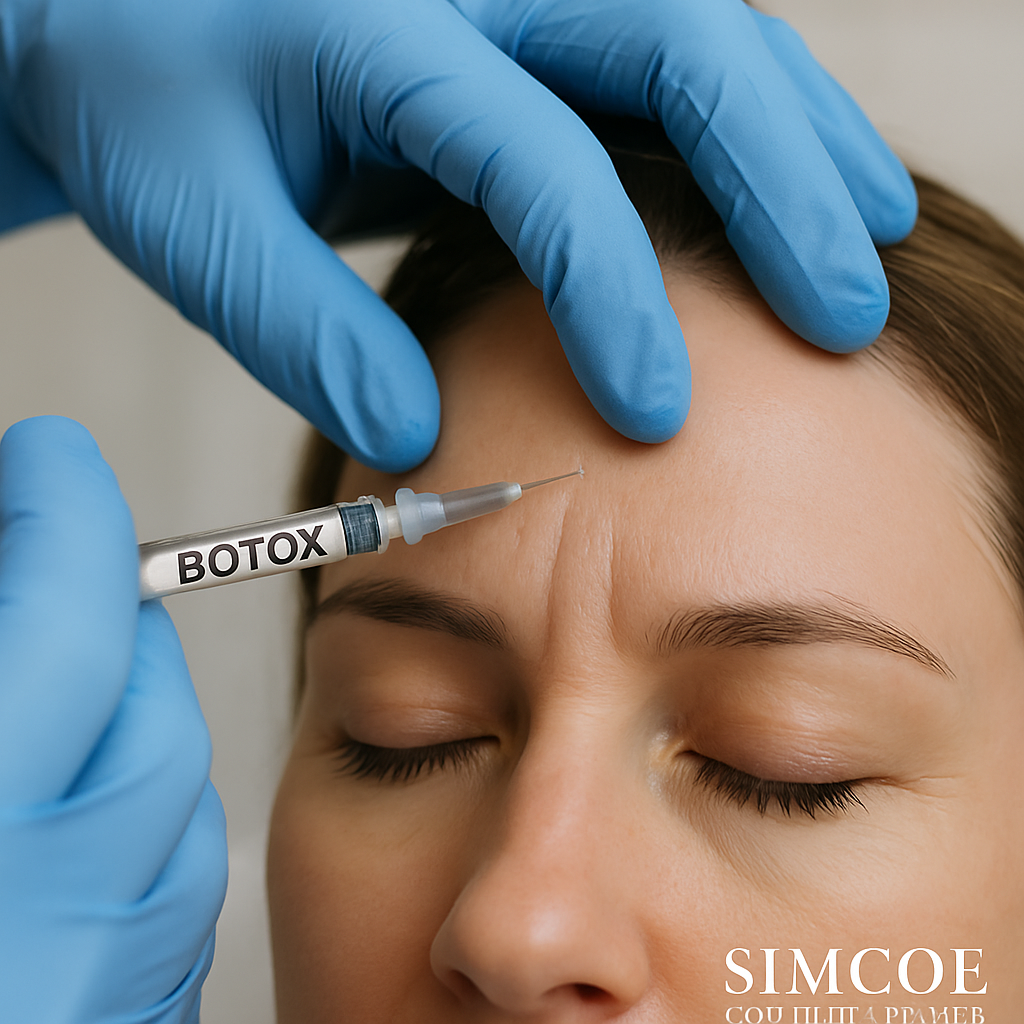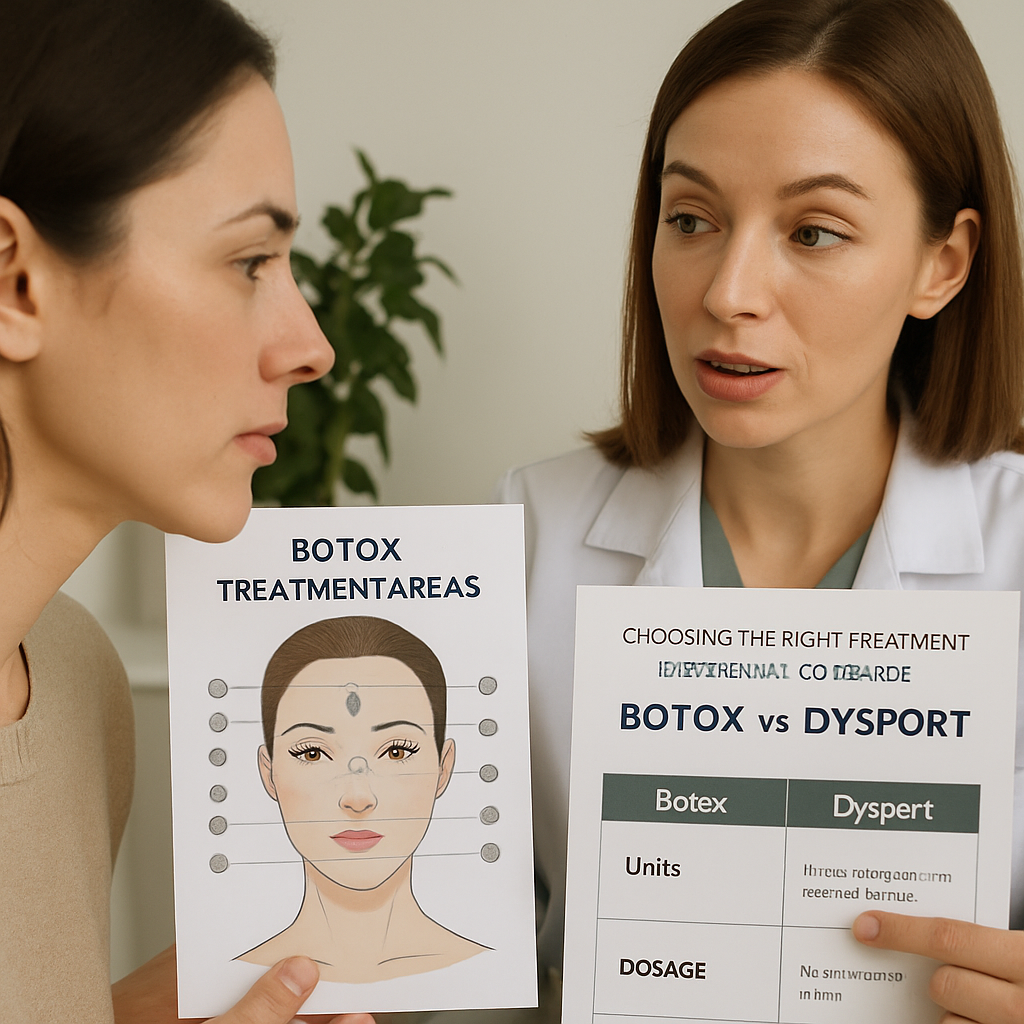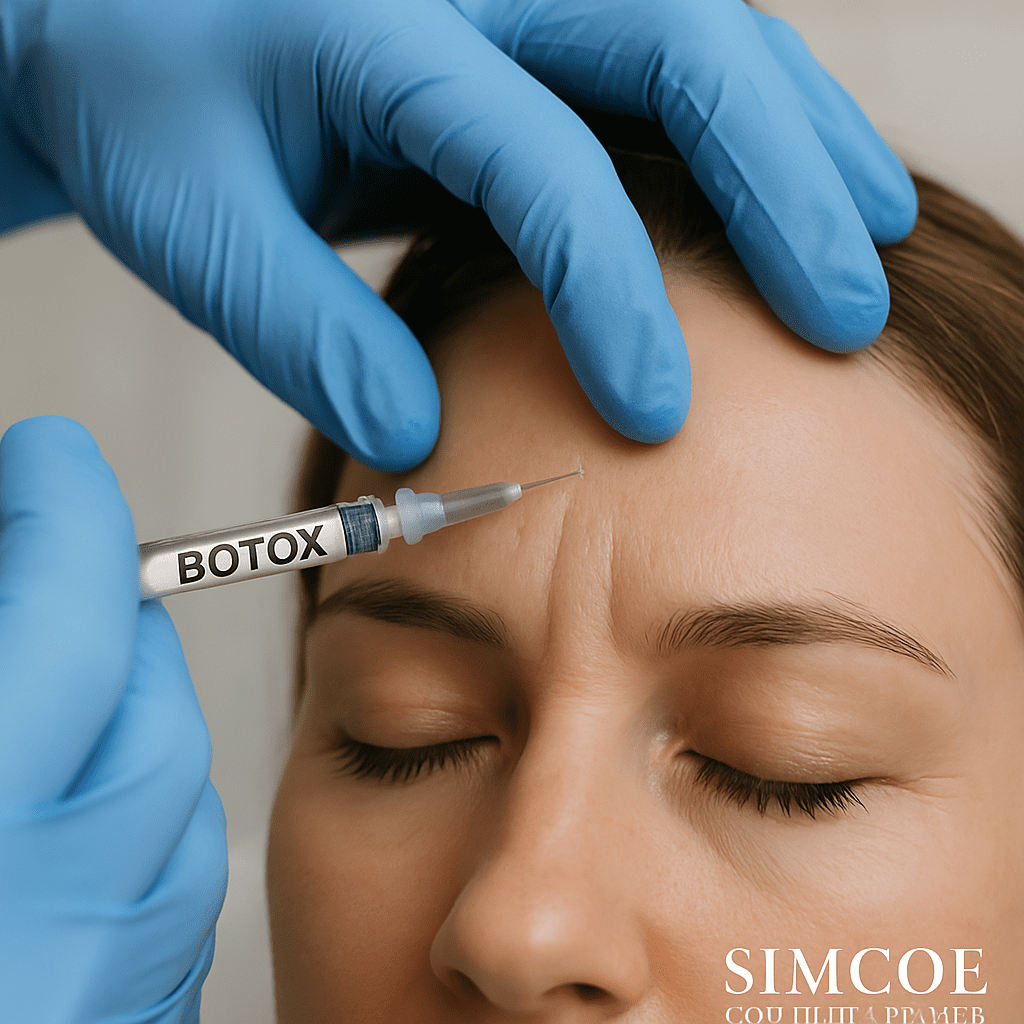Everyone’s heard of Botox, right? It’s been the go-to treatment for smoothing wrinkles and getting that youthful glow for years. But what about Dysport? If you’re exploring options to refresh your look without surgery, chances are you’ve wondered about the difference between Botox and Dysport.
Is one really better than the other, or are they basically the same? Understanding these subtle distinctions can make a huge difference in your results and satisfaction. Both Botox and Dysport are injectable neuromodulators made from botulinum toxin type A, designed to relax facial muscles and reduce wrinkle appearance. But how they work, their onset time, and dosage can vary.
Here’s the promise: once you grasp the difference, you’ll be empowered to choose the treatment that best matches your skin goals, lifestyle, and budget. For instance, some clients notice Dysport’s quicker onset and wider spread is perfect for larger treatment areas like the forehead, while Botox might be preferred for precision targeting around the eyes.
Curious what else sets them apart? You’re about to discover why these differences matter, especially when considering wrinkle reduction that looks natural and lasts. Whether you’re a woman in your 30s wanting to prevent early signs of aging, or a gentleman in your 50s seeking non-surgical rejuvenation, picking the right option can be game-changing.
And if you want the inside scoop on Botox treatment specifics in our area, check out our detailed insights on everything you need to know about Botox in Barrie. There you’ll find expert advice tailored just for you.
Ready to dive in? Let’s explore the key distinctions between Botox and Dysport, so you can make an informed choice at Simcoe Cosmetic Clinic and get results that truly reflect the best version of you.
TL;DR
Wondering about the difference between Botox and Dysport? Botox offers precise wrinkle control, while Dysport works faster and covers larger areas. Both reduce wrinkles effectively but suit different treatment goals and facial zones.
Choosing the right one depends on your unique needs, lifestyle, and desired results—perfect for anyone seeking a natural, youthful look at Simcoe Cosmetic Clinic.
What Are Botox and Dysport? Understanding Their Origins and Uses
If you’re curious about the difference between Botox and Dysport, it’s worth taking a closer look at what these two popular treatments really are and how they came to be.
Both Botox and Dysport are brand names for formulations of botulinum toxin type A, a powerful neurotoxin that temporarily relaxes muscle activity. It sounds intimidating, but when used by licensed professionals, these toxins provide effective, safe options to reduce wrinkles and address various medical conditions.
How Did Botox and Dysport Come Into Existence?
Let’s rewind a bit to the late 1960s and early 70s, when an ophthalmologist named Dr. Alan Scott first explored using botulinum toxin to treat eye muscle disorders—specifically, cross-eyed conditions like strabismus. His work paved the way for medical applications beyond surgery, including wrinkle treatment.
Botox goes back to this pioneering research in the US. Dr. Scott licensed his formulation, initially called Oculinum, which was later acquired and renamed Botox by the pharmaceutical giant Allergan.
Meanwhile, across the pond in the UK, doctors who trained under Dr. Scott saw its potential for other conditions. They collaborated with researchers in microbiology at Porton Down and developed abobotulinumtoxinA—commercially known as Dysport. Dysport launched in Europe in 1990 and has since gained global approval for both therapeutic and cosmetic use, now marketed in over 70 countries. Detailed historical background of Dysport
What Can Botox and Dysport Do for You?
Here’s the deal: these injections work by blocking chemical signals from nerves to muscles, preventing muscle contractions that cause wrinkles. The result? Smoother skin and a more youthful appearance.
But their uses aren’t limited to aesthetics. Both Botox and Dysport are FDA-approved treatments for a variety of medical issues, like chronic migraines, excessive sweating (hyperhidrosis), certain muscle spasticity disorders, and overactive bladders. Mayo Clinic explains Botox’s uses beyond wrinkles
So, why choose one over the other? It can depend on the area you want treated, the speed at which you want results, and even how your muscles respond individually. Dysport typically disperses more, making it favorable for treating larger or broader areas, while Botox offers precise targeting for smaller zones.
Both treatments require periodic maintenance injections every 3 to 4 months to uphold results, but your provider at Simcoe Cosmetic Clinic will tailor a plan that fits your unique needs.
Did you know?
Although the formulations differ slightly, both Botox and Dysport come from the same basic toxin but are processed differently, which affects dosage and spread—not effectiveness.
So, what should you do next?
Understanding these origins helps clarify the difference between Botox and Dysport, but the best way to know which one suits you is by consulting with a skilled clinician who can assess your goals and anatomy.
At Simcoe Cosmetic Clinic, our experts guide you through this choice so you achieve natural, refreshed results that suit your lifestyle.

How Botox and Dysport Work: Mechanism of Action Explained
Ready for a fascinating peek behind the scenes at how Botox and Dysport actually work their magic? It’s not just about smoothing wrinkles — it’s about a very precise mechanism that gently relaxes your muscles by targeting nerve signals.
Both Botox and Dysport are derived from botulinum neurotoxin type-A (BoNT-A), a powerful protein produced by the bacterium Clostridium botulinum. Despite their slightly different formulations, they share the same basic mode of action: blocking the release of a neurotransmitter called acetylcholine at nerve endings which control muscle movement.
But why does this matter for wrinkle reduction or muscle relaxation? Acetylcholine is the chemical messenger that tells your muscles to contract. When Botox or Dysport is injected into specific muscles, it prevents these nerves from releasing acetylcholine, effectively “turning off” the muscle contraction temporarily. That’s how these muscles become relaxed and wrinkles soften or spasms ease.
Here’s a quick breakdown of the science:
- Binding: The heavy chain of the neurotoxin attaches specifically to receptors on the surface of nerve endings.
- Internalization: The toxin is then taken inside the nerve cell through a process called endocytosis.
- Blockade: Once inside, the light chain acts as a protease that cleaves proteins essential for releasing acetylcholine.
With neurotransmitter release blocked, muscle contraction is inhibited until new nerve endings regenerate — typically over 3 to 4 months. This explains why treatments need to be repeated periodically to maintain results.
So, does the difference between Botox and Dysport come down to how their neurotoxins work? Interestingly, studies show that the core 150 kDa neurotoxin in both products has very similar activity at the molecular level. In other words, the fundamental mechanism of action is essentially the same, with both blocking acetylcholine release effectively.
The key variations lie in the amount of active neurotoxin delivered per dose and how the product disperses in tissues. Dysport contains a higher quantity of the active neurotoxin per FDA-approved dose than Botox, which is why it may diffuse more broadly, sometimes making it preferable for larger treatment areas. Botox’s formulation allows for more precise targeting, especially in smaller, defined muscles.
Have you ever wondered why some people notice their wrinkles soften sooner with Dysport, while others swear by Botox’s fine control? This often comes down to these subtle differences in formulation and toxin quantity—not a completely different action mechanism.
Want to know what this means for your treatment plan? Your provider at Simcoe Cosmetic Clinic can help customize which product suits your unique muscle anatomy and desired outcome, ensuring natural-looking results.
Botulinum toxin injections aren’t just cosmetic—they’re used therapeutically as well. Besides wrinkle reduction, Botox and Dysport treat conditions like chronic migraines, muscle spasticity, and hyperhidrosis by targeting dysfunctional muscle or nerve activity. Their shared mechanism of action makes them versatile tools in both medical and aesthetic fields.
Curious about the safety aspect? Both products block nerve signals temporarily without damaging the muscles permanently. Your ability to move your muscles returns as the nerve endings regenerate and acetylcholine release resumes.
In sum, understanding the difference between Botox and Dysport at the molecular level boils down to the dosage and spread of the neurotoxin rather than a different mechanism. Both are potent, precise neurotoxins built to relax muscles by halting acetylcholine transmission, giving your skin that fresh, youthful appearance.
If you’re considering treatment but puzzled by all the scientific jargon, just remember: it’s all about choosing the right product for your goals and anatomy. And that choice is best made with expert guidance tailored just for you.
For a deeper dive into botulinum toxin injections, the Cleveland Clinic offers excellent insight into how these treatments work and what to expect in their comprehensive guide. Meanwhile, the detailed work done by researchers at the National Institutes of Health shines a spotlight on how these neurotoxins’ activity translates into clinical benefits as explained in this study.
Ready to experience the science-backed benefits of these treatments? Reach out to Simcoe Cosmetic Clinic and discover your ideal approach to look refreshed and feel confident.
Key Differences Between Botox and Dysport: Dosage, Onset, and Spread
If you’ve ever wondered what truly sets Botox and Dysport apart beyond their brand names, it largely comes down to how they’re dosed, how quickly they start working, and how they spread after injection. These factors can influence your treatment experience and results, so let’s unpack them.
Dosage Differences: How Much Do You Really Need?
One of the biggest differences between Botox and Dysport is the dosage and how units translate between the two. The commonly accepted conversion ratio is that 1 unit of Botox is approximately equivalent to 3 units of Dysport. This ratio is not set in stone, but it’s a practical guideline used by many practitioners to try to balance potency and effects according to clinical research.
Why does this matter? Because the number of units determines how much toxin is injected, affecting both efficacy and side effects.
Dysport tends to be more diluted in its formulation, meaning it requires more units to achieve similar muscle relaxation compared to Botox, but some users find that this provides a wider area of effect. Meanwhile, Botox uses concentrations optimized for precision, which can be preferable in delicate areas.
At Simcoe Cosmetic Clinic, we customize the dosing according to your anatomy and aesthetic goals, making sure to use the right preparation in the right amount to get you that fresh, youthful look safely and effectively.
Onset of Action: When Can You Expect to See Results?
Are you impatient and want those wrinkles softened as quickly as possible? Both Botox and Dysport generally begin to work within days, but there’s a subtle difference.
Dysport often demonstrates a faster onset, with many patients noticing improvement within 24 to 48 hours. Botox typically takes about 3 to 5 days to start showing results, with peak effects up to two weeks post-injection as detailed in dermatologic studies.
This quicker onset can be a deciding factor if you’re prepping for a big event on short notice. However, the difference is usually mild, and both provide excellent wrinkle smoothing when administered by experienced professionals.
Spread: Targeted Precision or Broader Coverage?
The way the neurotoxin spreads after injection impacts the treatment’s precision and side-effect profile. Dysport’s formulation allows for greater diffusion or spread in the local area, which may benefit larger or less defined muscle groups, but also carries a slightly higher risk of affecting nearby muscles unintentionally.
Botox is known for its more targeted effect, allowing for precise muscle relaxation. If you’re aiming to soften very specific wrinkles—like the delicate lines around the eyes or frown lines—Botox might be the better choice.
Both have strong safety profiles when administered correctly, but understanding this difference can help tailor your treatment plan.
Wondering what that means for pricing? Since Dysport units are counted differently, the total cost might vary, but quality of outcome and safety always come first at Simcoe Cosmetic Clinic.
Summary Table: Botox vs Dysport
| Feature | Botox | Dysport | Notes |
|---|---|---|---|
| Dosage Conversion | 1 Unit | ~3 Units | Commonly used clinical conversion ratio source |
| Onset of Effect | 3–5 days | 24–48 hours | Dysport tends to act faster but both peak around 2 weeks source |
| Spread After Injection | More localized, precise | Wider diffusion | Impacts muscle coverage area and risk of diffusion |
| Best for | Precision areas (e.g. around eyes) | Larger muscle groups or broader coverage | Depends on treatment goal |
How do you choose? It boils down to your unique needs and lifestyle. If you want fast results and broader coverage for larger muscles, Dysport could be your go-to. If you prefer precision and a slightly more conservative approach, Botox is excellent.
At Simcoe Cosmetic Clinic, we evaluate your facial anatomy, wrinkle patterns, and personal preferences to recommend the most suitable neurotoxin and dosage strategy.
Curious how these differences impact your look? Reach out for a personalized consultation where we can discuss your goals and the smart use of these amazing treatments.
Choosing the Right Treatment: Factors to Consider
When it comes to deciding between Botox and Dysport, the choice isn’t just about the brand name. You need to consider several important factors that influence how well the treatment fits your unique facial structure, lifestyle, and aesthetic goals.
Understanding Your Treatment Goals
First, what are you aiming for? Are you targeting small, delicate areas like around the eyes or deeper forehead lines? Botox’s more localized effect offers precision, making it ideal for subtle, targeted treatments. Meanwhile, if you want faster results with broader coverage, especially on larger muscle groups, Dysport tends to diffuse more extensively and acts quicker. This can be perfect if you’re addressing areas like your forehead or for a more generalized wrinkle smoothing.
How fast do you want to see changes? Dysport often starts working within 24 to 48 hours, while Botox usually takes about 3 to 5 days to kick in. If you’re after rapid visible results, Dysport could be your friend. But if you prefer a gradual, controlled approach, Botox might be better.
Considering Dosage and Diffusion
Another key factor is dosage. Keep in mind, the units for Botox and Dysport aren’t interchangeable on a one-to-one basis. Typically, one unit of Botox equals approximately three units of Dysport, but exact conversion should always be personalized by your treatment provider.
Why does this matter? Because Dysport’s formula allows it to diffuse further, it can cover a wider area but also carries a slightly higher risk of spreading to unintended muscles. For areas requiring precision, like crow’s feet, Botox’s more focused spread is often preferred.
Safety, Side Effects, and Your Medical History
Both treatments are FDA-approved and considered safe when administered by trained professionals. Side effects are generally mild and temporary, such as minor bruising or swelling. However, individual medical conditions, allergies, or neuromuscular disorders may influence which treatment is safer for you. Always share your full medical history during your consultation to ensure the best tailored advice.
Longevity and Maintenance
Both Botox and Dysport typically last around four months, but some patients report Dysport’s effects might feel more quick-acting initially. Your personal metabolism, muscle activity, and the specific area treated all play roles in how long results last.
Curious about maintenance? Regular follow-up treatments keep wrinkles at bay effectively, but it’s wise to space sessions to avoid overuse and allow your skin to adjust naturally.
Cost Considerations and Local Expertise
Pricing can vary based on the units needed, treatment area, and clinic. Since Dysport requires more units per session, some providers may price it differently. At Simcoe Cosmetic Clinic, we prioritize achieving natural, long-lasting results over cost alone, ensuring your treatment plan matches your needs and budget.
Remember, selecting the right treatment also means choosing a skilled provider who understands your facial anatomy deeply. Our team at Simcoe Cosmetic Clinic customizes each plan, blending your goals with clinical expertise for optimal outcomes.
Still unsure? Have a look at expert resources like the Cleveland Clinic’s detailed comparisons for more on how these treatments differ. Or read the scientific insights from a clinical study exploring Botox and Dysport equivalency for a deeper dive.
At the end of the day, the difference between Botox and Dysport comes down to your face and your lifestyle. The best approach? Talk to our experts in Barrie who can guide you through the options and create a personalized plan just for you. Take a moment to explore everything you need to know about Botox in Barrie to get started on your journey to looking younger with confidence.

Cost Comparison and Availability in Your Area
When it comes to the difference between Botox and Dysport, cost and availability often top the list of questions. You want to know what you’re paying for and if you can conveniently access these treatments near you.
Let’s talk pricing first. Both Botox and Dysport are priced by the unit, but here’s the twist: Dysport is more diluted, so you typically need about three times as many units compared to Botox to achieve the same wrinkle-relaxing effect. For example, one unit of Botox roughly equals three units of Dysport. This means even though Dysport’s per-unit price is generally lower, the total cost tends to even out between the two.
In our Barrie community, typical Botox treatments might range from $12 to $15 per unit, while Dysport can go for around $4 to $6 per unit. But remember, you might require roughly three times more Dysport units, so your final price remains very similar. Choosing between them isn’t just about the upfront cost but also about which fits your facial muscles and goals better.
So how do you navigate availability? Botox has been around longer and is widely stocked, so finding clinics that offer Botox is usually easier. Dysport, while growing in popularity, can sometimes be harder to find, especially in smaller towns or less urban areas. In Barrie, at Simcoe Cosmetic Clinic, we proudly offer both options, ensuring you have access to personalized care tailored to what suits you best.
Wondering if location affects your choice? Absolutely. Clinics closer to larger cities often have a broader range of neuromodulator options. If you’re searching for “Botox Barrie” or “Dysport near me,” it’s a good idea to check that your provider is certified and experienced — more than just availability matters.
Understanding Value: More Than Just Price
Consider this: investing a bit more today in a skilled injector can save you from disappointing results that might cost extra touch-ups later. Both products promise results lasting up to four months, but some report Botox lasting a bit longer. That might influence your cost-effectiveness if you prefer less frequent appointments.
As you weigh your options, here’s a quick tip: ask your provider about package deals or loyalty programs. Many med spas offer discounts if you book a series of treatments or become a regular client. These incentives often make maintaining your youthful look more affordable over time.
How to Decide in Your Area?
If you’re unsure which option is easier to find or makes more sense for your budget, start with a consultation. At Simcoe Cosmetic Clinic, we not only guide you through the difference between Botox and Dysport but also provide transparent pricing and availability tailored to your needs.
For more in-depth information on how these two neuromodulators compare, check out the detailed breakdown on Dysport vs Botox by Viva Day Spa+Med Spa. You can also explore local insights from clinics specializing in these treatments, like by visiting Elev8 Aesthetics’ overview of Botox availability in the Kitchener-Waterloo area, which shares helpful information applicable to many regions including ours.
At the end of the day, the best choice in cost and availability matches your personal treatment plan and lifestyle goals. Don’t let price alone drive your decision—go with the expertise and convenience that fit your needs right here in Barrie.
Safety, Side Effects, and Aftercare for Botox and Dysport Treatments
When considering the difference between Botox and Dysport, you might wonder: are they equally safe? The good news is that both have an excellent safety profile when administered by a skilled provider, like our experts at Simcoe Cosmetic Clinic. But it’s important to understand the nuances, possible side effects, and how to care for your skin afterward to get the best results without complications.
Understanding Safety: What Sets Botox and Dysport Apart?
Both Botox and Dysport are forms of botulinum toxin type A, which temporarily relax muscles to smooth wrinkles. They are FDA-approved and have been used safely for cosmetic and therapeutic purposes for years. However, Dysport tends to spread slightly more due to its formulation, which can be a plus or a drawback depending on treatment area and desired effects. But safety-wise, neither poses significantly greater risks than the other when injected correctly.
Of course, both treatments should only be performed by licensed healthcare professionals. Improper injections can cause issues like asymmetry, drooping eyelids, or unwanted muscle weakness. Selecting an experienced provider at Simcoe Cosmetic Clinic minimizes these risks and ensures you’re monitored closely throughout the process.
Common Side Effects: What Can You Expect?
Most side effects of Botox and Dysport are mild and temporary. Expect minor redness, swelling, or bruising around the injection sites — these usually resolve within a few days. Some patients might experience headaches or slight flu-like symptoms, but these are rare.
More serious side effects, like muscle weakness away from the treated area or difficulty swallowing and breathing, are extremely uncommon but require immediate medical attention. According to the WebMD Dysport overview, symptoms resembling botulism toxin spread can appear hours or weeks after injection. Always report unusual symptoms to your healthcare provider promptly.
Keep in mind, if you’re over 65 or have existing health conditions, your risk of side effects may increase. These factors further highlight why professional consultation and follow-up are vital.
Aftercare Tips: Protect Your Investment in Your Youthful Look
So, after your treatment, what’s next? Let’s break down straightforward aftercare steps that boost your results and limit side effects:
- Avoid touching or massaging the treated areas for at least 24 hours to prevent toxin migration.
- Skip vigorous exercise and saunas the day of treatment — increased blood flow can disperse the product prematurely.
- Stay upright for 4 to 6 hours post-injection; lying down might affect how Botox or Dysport settles.
- Avoid alcohol and anti-inflammatory medications like ibuprofen for 24 hours to reduce bruising potential.
- Follow any personalized instructions your injector provides, especially if you have sensitive skin or medical conditions.
Many clients ask, “How long does it take for Botox or Dysport side effects to disappear?” Typically, any swelling or bruising fades within a few days, while the full cosmetic effects become visible around 7 to 14 days.
Keep a photo diary to compare before and after — this helps track progress and spot any unusual changes. Reach out to your provider if you notice excessive bruising, persistent muscle weakness, or allergic reactions like rash or breathing difficulty.
Curious about how these safety precautions fit into the broader difference between Botox and Dysport? While their mechanisms are similar, your provider might suggest one over the other based on your anatomy, lifestyle, or sensitivity. Trusting a clinic that prioritizes safety and transparent communication, like Simcoe Cosmetic Clinic, can make all the difference.
Learn more about Dysport’s safety from the comprehensive FDA overview or read about botulinum toxin therapies in peer-reviewed clinical research. Being informed empowers you to make confident choices about your anti-aging treatments.
Conclusion
Understanding the difference between Botox and Dysport can truly empower you to make the best decision for your aesthetic goals.
Both treatments work wonders to smooth wrinkles and rejuvenate your appearance, but subtle differences in onset time, diffusion, and dosage might sway your choice.
Have you considered which option aligns better with your lifestyle and skin sensitivity? For example, if you’re after quicker results or you prefer a gentler spread across your muscles, Dysport may be the way to go. On the other hand, Botox’s long track record and precise targeting could be more suitable if you want tightly controlled results.
Remember, consulting with skilled professionals like the team at Simcoe Cosmetic Clinic makes all the difference. They’ll tailor the treatment to your unique needs, ensuring both safety and satisfaction without any guesswork.
So, what should you do next? Schedule a personalized consultation to discuss your concerns, expectations, and medical history. This step ensures you get a clear understanding of which toxin best fits your goals—whether it’s Botox Barrie or Dysport—or even a combination optimized for you.
Your journey towards a refreshed, younger look starts with informed choices and expert care. Dive deeper into trusted sources and keep communication open with your provider. That’s the real secret behind stunning, natural results!
Frequently Asked Questions (FAQ)
What is the main difference between Botox and Dysport?
Both Botox and Dysport are injectable neuromodulators that relax muscles to reduce wrinkles, but they differ slightly in how they spread and take effect. Dysport tends to diffuse over a wider area, which might be better for larger treatment zones, while Botox offers more precise targeting. Understanding this difference helps tailor your treatment to your aesthetic goals.
How soon will I see results after treatment with Botox or Dysport?
Dysport typically starts working a little faster, often within 2 to 3 days, whereas Botox results usually begin to show within 3 to 5 days. Full effects for both can take up to two weeks. If you’re eager to see a quicker transformation, Dysport might be worth considering, but your provider can help you decide what fits your timeline best.
Do Botox and Dysport last the same amount of time?
Generally, both treatments last between 3 to 4 months. Some patients report Dysport wears off slightly sooner, while others find Botox’s effects fade a bit earlier. It really comes down to individual metabolism and the injection area. Regular touch-ups timed with your provider’s advice keep your look fresh without overdoing it.
Are there any different side effects I should watch out for?
Side effects for both are similar and usually mild — think temporary redness, bruising, or slight discomfort at the injection site. Since Dysport spreads a little more, there’s a slight chance of affecting nearby muscles, which your trained injector at Simcoe Cosmetic Clinic will skillfully avoid. Always share your medical history and any concerns before treatment.
Can I switch between Botox and Dysport or combine them?
Absolutely! Some clients switch based on how their body responds or combine both for customized results. Your specialist can recommend the best approach after evaluating your skin, muscle strength, and desired outcome. Switching isn’t risky if done properly, so don’t hesitate to ask during your consultation.
How do I choose which treatment is right for me?
Choosing between Botox and Dysport comes down to personal goals, treatment areas, and lifestyle. Want faster onset and broader coverage? Dysport might be your go-to. Prefer pinpoint precision with a long-standing track record? Botox could be better. The expert team at Simcoe Cosmetic Clinic will help craft a plan just for you.
Is treatment painful?
Most clients find both Botox and Dysport injections quick and relatively painless, with only minimal discomfort like a small pinch. Some describe it as less than a mosquito bite. Plus, our skilled professionals use techniques to keep you comfortable throughout. Don’t let fear of needles hold you back from looking and feeling your best!
Still curious about the difference between Botox and Dysport? Why not schedule a personalized consultation with us at Simcoe Cosmetic Clinic? Our experts will walk you through every step and create a tailored treatment plan that fits your unique needs and lifestyle. Your journey to a refreshed, youthful look starts with the right questions—and we’re here to answer every one of them!




